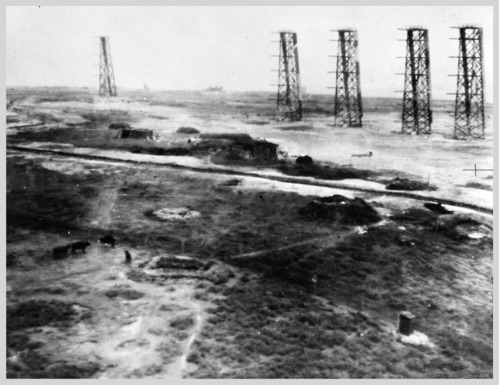
Luftwaffe Station Erika II - Tausendfüssler
Erika II (Erika FuG 121) was a long-range navigation system developed by the German Luftwaffe which provided a guidance system for their night bombers, accurate to within 400 meter. This was a development of the original system, first used operationally in the devastating raid against Coventry on 15 November 1940.
The system used two transmitter stations, as far apart as could be achieved. The first station used two transmitters, both aimed at the target. One transmitter produced a series of dots in the aircraft's Lorenz blind-landing radio receiver, the second a series of dashes. Where the lobes overlapped, the signals would merge to give the pilot a steady tone; any deviation from track could be corrected by steering back into the constant note. This gave the pilot the bearing to the target, but not the range. So the second station's beam was aimed at a point a few kilometres before the target. When the bomb-aimer heard that special tone, he would start a clock so that the bombs would be dropped automatically exactly on the target.
The British soon detected these beams and tried to “bend” them away from the intended target. Thus started an electronic air war which continues to this day.
East of Cherbourg, and far away from other stations in Germany and Holland, the German Luftwaffe installed a transmitter station with 6 transmitters, together with bunkers for generators and control equipment. The broadcast station was codenamed Tausendfüssler (centipede). Erika II system was simple and effective, but the development came very late in the war, by which time it was redundant as German bombing raids on England had long since ceased.
Still to be seen in a field at St. Pierre Eglise are the foundations for the antennae and the small bunkers for generators.



